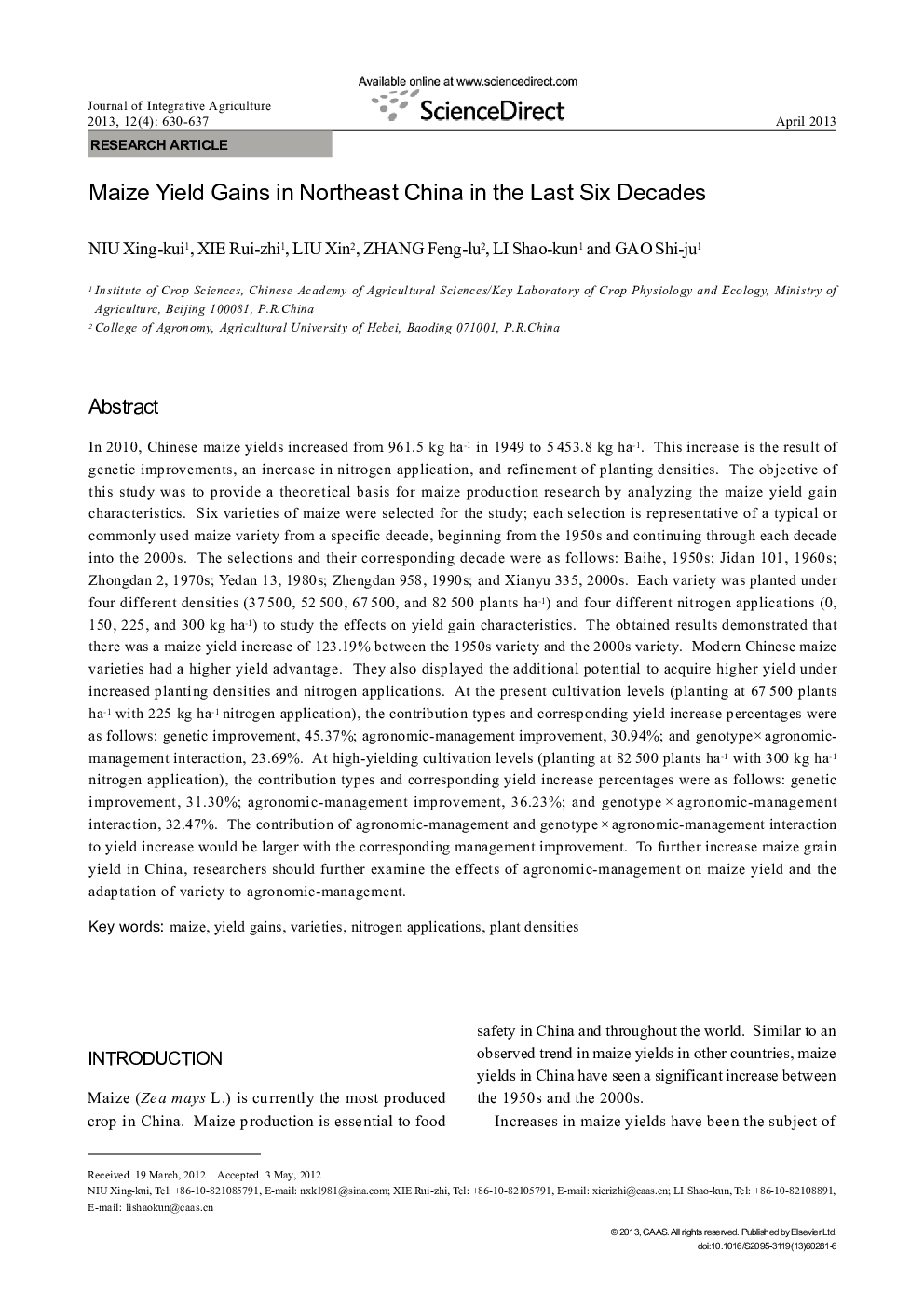| Article ID | Journal | Published Year | Pages | File Type |
|---|---|---|---|---|
| 4495032 | Journal of Integrative Agriculture | 2013 | 8 Pages |
In 2010, Chinese maize yields increased from 961.5 kg ha−1 in 1949 to 5 453.8 kg ha−1. This increase is the result of genetic improvements, an increase in nitrogen application, and refinement of planting densities. The objective of this study was to provide a theoretical basis for maize production research by analyzing the maize yield gain characteristics. Six varieties of maize were selected for the study; each selection is representative of a typical or commonly used maize variety from a specific decade, beginning from the 1950s and continuing through each decade into the 2000s. The selections and their corresponding decade were as follows: Baihe, 1950s; Jidan 101, 1960s; Zhongdan 2, 1970s; Yedan 13, 1980s; Zhengdan 958, 1990s; and Xianyu 335, 2000s. Each variety was planted under four different densities (37 500, 52 500, 67 500, and 82 500 plants ha−1) and four different nitrogen applications (0, 150, 225, and 300 kg ha−1) to study the effects on yield gain characteristics. The obtained results demonstrated that there was a maize yield increase of 123.19% between the 1950s variety and the 2000s variety. Modern Chinese maize varieties had a higher yield advantage. They also displayed the additional potential to acquire higher yield under increased planting densities and nitrogen applications. At the present cultivation levels (planting at 67 500 plants ha−1 with 225 kg ha−1 nitrogen application), the contribution types and corresponding yield increase percentages were as follows: genetic improvement, 45.37%; agronomic-management improvement, 30.94%; and genotype× agronomic-management interaction, 23.69%. At high-yielding cultivation levels (planting at 82 500 plants ha−1 with 300 kg ha−1 nitrogen application), the contribution types and corresponding yield increase percentages were as follows: genetic improvement, 31.30%; agronomic-management improvement, 36.23%; and genotype × agronomic-management interaction, 32.47%. The contribution of agronomic-management and genotype × agronomic-management interaction to yield increase would be larger with the corresponding management improvement. To further increase maize grain yield in China, researchers should further examine the effects of agronomic-management on maize yield and the adaptation of variety to agronomic-management.
